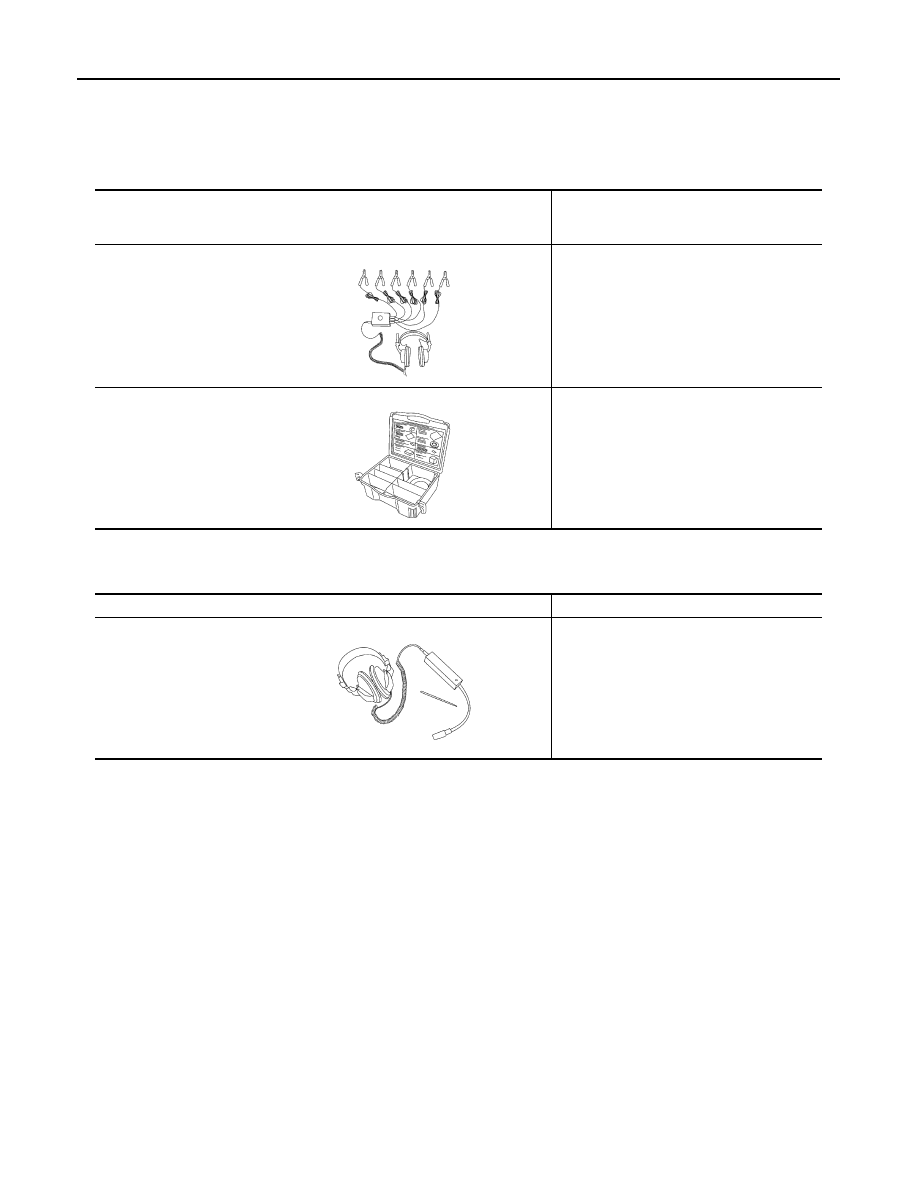Infiniti FX35 / FX45. Manual - part 730

GW-4
< SERVICE INFORMATION >
PREPARATION
PREPARATION
Special Service Tool
INFOID:0000000001327955
The actual shapes of Kent-Moore tools may differ from those of special service tools illustrated here.
Commercial Service Tool
INFOID:0000000001327956
Tool number
(Kent-Moore No.)
Tool name
Description
(J39570)
Chassis ear
Locating the noise
(J43980)
NISSAN Squeak and Rat-
tle Kit
Repairing the cause of noise
SIIA0993E
SIIA0994E
Tool name
Description
Engine ear
Locating the noise
SIIA0995E